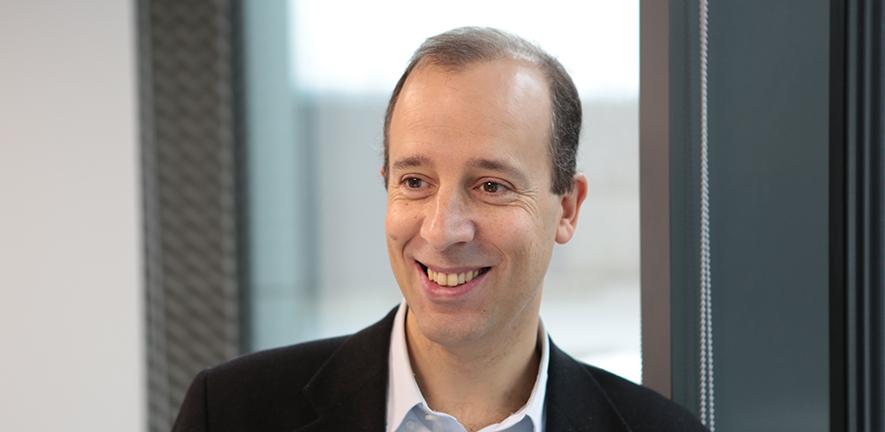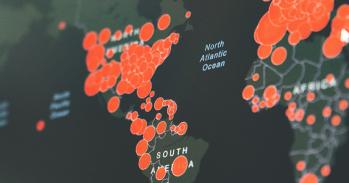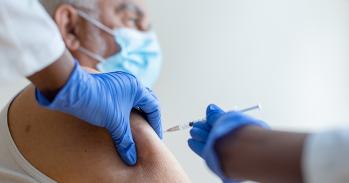
Jorge Goncalves is an expert in artificial intelligence and mathematical modelling of complex systems. With long-term collaborators based in Wuhan, China, when the COVID-19 outbreak started he seized the opportunity to help. Using data representing almost 500 patients from Wuhan, he has created a sophisticated model to accurately predict disease severity and help identify high-risk patients.
Jorge Goncalves is an expert in artificial intelligence and mathematical modelling of complex systems. With long-term collaborators based in Wuhan, China, when the COVID-19 outbreak started he seized the opportunity to help. Using data representing almost 500 patients from Wuhan, he has created a sophisticated model to accurately predict disease severity and help identify high-risk patients.
This article is part of a series in which we speak to some of the many Cambridge researchers tackling COVID-19. For other articles about our latest COVID-19-related research, click here.
I work in various places, including Cambridge, Luxembourg, and Wuhan. I was in Wuhan for a month last November, and luckily left right before the outbreak started. In anticipation of the travel ban, I cancelled all my trips and went to Luxembourg, where my family lives.
Computational tools can be tremendously helpful in searching large datasets and extracting key information. I enjoy digging through the complexity inherent in biological and biomedical systems. I use mathematical models to generate and test new ideas, provide insights into biological mechanisms, and try to pinpoint the source of diseases. My normal research ranges from understanding the mechanisms of the circadian clocks in plants, to anticipating heart attacks in humans. I’m now using my expertise to help predict the impact of COVID-19 on our lives.
I was approached by Luxembourg’s National COVID-19 Task Force and the government to predict how COVID-19 will spread in Luxembourg. Half of my group volunteered to help. For over two months we’ve been simulating different lockdown exit scenarios. We make short- and mid-term projections on the number of infected people, ICU occupancy and number of deaths. Luxembourg is a unique country: due to its small size, we can simulate how the virus spreads through the entire real work, household and school networks. This allows us to build epidemiological models at the individual level to test different exit strategies.
The main objective of the exit strategy is to safely revive the economy. This means simulating a large number of alternative ways to progressively open key sectors of the economy, while keeping the number of newly infected people to a minimum. This information has been the basis on which the government of Luxembourg makes their decisions. Examples of our simulations can be found in the 25 May 2020 report.
In another project, we’ve developed a model to predict COVID-19 patient survival with over 90% accuracy. With collaborators from Huazhong University of Science and Technology in Wuhan, we identified three key blood-borne biomarkers that help predict mortality 10 days in advance. We analysed blood samples from almost 500 COVID-19 patients from Wuhan and trained a machine learning algorithm to reliably predict those at high risk of death. The goal is to identify high-risk COVID-19 patients needing urgent care as early as possible. The work was recently published in the journal Nature Machine Intelligence.
Although we’ve been in lockdown for over two months we’re really only at the beginning of the pandemic. At the moment about 2% to 5% of the population is infected with COVID-19 globally. This means that 95% of the population is still susceptible. Herd immunity is only reached after at least two-thirds of the population has been infected. Reaching it by infecting each other comes at an unacceptably high loss of life, even if the health care system does not saturate. Herd immunity should only be reached with a vaccine.
Patience is therefore one of the biggest challenges we face today. Governments must continue to remind everyone of the risks associated with the virus, and educate people to be responsible while easing confinement measures. At the same time, we need to be creative with safe social interactions to safeguard the mental health of children, seniors, and the most vulnerable. After COVID-19 we should be better prepared to face another viral threat. We’re now familiar with face masks, social distancing and contact tracing, which are key steps in slowing the spread of a virus.
It has been impressive to see our community, the country and the world came together to tackle this problem. Academics put their research aside and started collaborating with a wide range of specialists ranging from virologists, medical doctors, epidemiologists, engineers, statisticians, physicists, social scientists, economists, and others. No-one can do this alone, and we have been helping each other understand this pandemic, putting aside competition and sharing information.
When the pandemic is over, I’m looking forward to having a pint of beer with my friends, going on holiday with my family, and getting back to my core research. In that order!
Jorge Goncalves holds positions as Principal Research Associate in Information Engineering in the University of Cambridge’s Department of Plant Sciences, and Head of the Systems Control group at the University of Luxembourg’s Centre for Systems Biomedicine.
How you can support Cambridge’s COVID-19 research

The text in this work is licensed under a Creative Commons Attribution 4.0 International License. Images, including our videos, are Copyright ©University of Cambridge and licensors/contributors as identified. All rights reserved. We make our image and video content available in a number of ways – as here, on our main website under its Terms and conditions, and on a range of channels including social media that permit your use and sharing of our content under their respective Terms.




